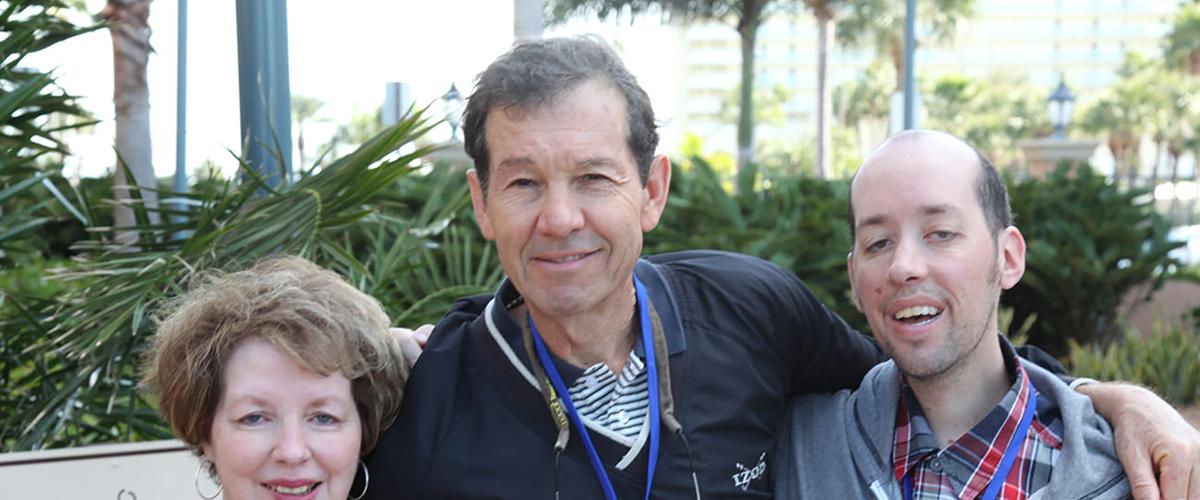Poor communication, fatigue and gastrointestinal problems worry parents most.
Dr. Nicholas Johnson at the University of Utah and colleagues released the results of an MDF-funded multinational study on the impact of congenital myotonic dystrophy (CDM). The study relied upon a survey filled out by 150 American, Canadian and Swedish parents to better understand both the frequency and the impact of symptoms in children with different repeat lengths and different types of CDM. The survey inquired about 325 symptoms of importance and 20 “symptomatic themes.” Children in the study were divided into three groups: congenital DM (CDM), with symptom onset at birth; childhood onset DM (ChDM), with symptoms starting between ages one and ten; and juvenile onset DM (JDM), with symptoms starting after age 10 but before age 18.
Frequency of Symptoms
Parents reported that communication issues (81%), problems with hands or fingers (79.6%) and fatigue (78.6%) were the most common symptomatic themes across all children in the study, while the most common individual symptoms were hand weakness, difficulty opening jars or bottles and learning difficulties. The investigators also examined the influence of repeat length and age on both symptom themes and individual symptoms. Many symptom themes were found to be more common as children became older, such as hand or finger problems, emotional issues, fatigue, pain, inability to do activities, myotonia, gastrointestinal issues and social issues. Children with higher repeat counts showed increased frequency of leg and trunk weakness and problems with bowel control, although myotonia was less frequent in children with higher repeat counts. Interestingly, emotional issues, changes in body image, social issues and impaired sleep were more common when the mutation was inherited from the father.
Impact of Symptoms
The authors looked at the impact of symptoms on children in two ways: first they analyzed the impact of symptoms for the individual, then they analyzed the impact of symptoms for all children with congenital or childhood myotonic dystrophy—the “population impact”— by multiplying the individual impact by the frequency of the symptom. The symptom themes that parents reported had the greatest impact on their individual children’s lives were gastrointestinal issues, problems with urinary or bowel control and decreased performance in social situations. The authors make the point that these symptom themes are different from those identified by adults with DM, namely fatigue and mobility and activity limitations (DM2 patients identified fatigue and other disease symptoms as having the greatest impact on daily living in an article published by MDF in Decmber 2015). Parents of children with greater repeat lengths reported a higher life impact for leg weakness and parents of children who inherited the mutation from their fathers reported a higher life impact for pain. The symptom themes with the greatest population impact were found to be communication issues, fatigue and gastrointestinal issues. The specific symptoms with the greatest population impact were learning difficulties, reliance on family members, and difficulty with math.
Additional Factors
From a social standpoint, many children required special assistance in school, such as speech therapy (55.3%), occupational therapy (40.7%), physical therapy (35.3%), smaller class size (42.7%), test modifications (42%), and augmentative speech methods (19.2%). The survey also showed that children with DM1 who are now adults have difficulty in getting jobs. Parents reported that 15.8% of children had anesthesia complications (56.8% reported no problems and 27.4% had never had anesthesia), and 24.1% had cardiac arrhythmias. Finally, the rate of intellectual disability in children in the study was 28.3% - 45.8% compared to 0.71% in the general population. In particular, children in the study had higher rates of autism spectrum disorder (ASD) and attention deficit hyperactivity disorder.
Take Home Messages
The authors conclude by noting that the high rate of communication problems should be addressed with early referrals for speech therapy and that early cardiac monitoring should be performed. Also, the rate of anesthesia complications reinforces the need for special attention in this group. Overall, the authors emphasize that the high frequency of social and cognitive issues associated with the disease make the need for a multi-disciplinary approach to care much more important.

